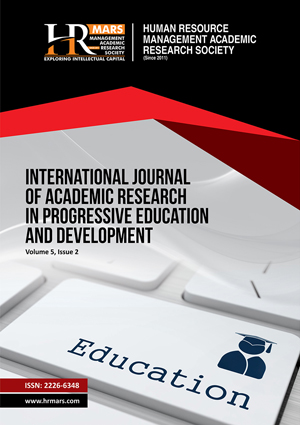
ISSN: 2226-6348
Open access
Timber is defined as the structural wood used for construction or other purposes. It is one of the oldest building materials and most sustainable resources. In recent years, the availability of high-grade timber species has dwindled due to ongoing deforestation and a decrease in log production. Hence, this study explores the mechanical properties of Malaysian Chengal wood (Neobalanocarpus heimii), a species highly valued for its strength, durability, and resistance to decay and insects. Despite its widespread use in construction, flooring, and marine applications, detailed data on its mechanical behaviour is scarce. This research aims to fill this gap by systematically analysing Chengal wood’s mechanical properties through bending, compression, and tensile tests. The study measured vital parameters such as Modulus of Rupture (MOR) and Modulus of Elasticity (MOE). The MOR, indicating the wood's resistance to external forces, was determined to be 54 MPa, while the MOE, reflecting stiffness and deformation properties, was 18400 MPa. These values are crucial for understanding the wood's elastic behaviour and ability to return to its original shape after deformation. Test results revealed a linear and non-linear behaviour, with all specimens exhibiting brittle to brittle-ductile failure patterns. Failures were primarily due to defects like knots, cross grains, and splits, which caused complex stress distributions. Various failure patterns were observed, underscoring the impact of these defects on the wood's mechanical performance. This comprehensive evaluation of Chengal wood's mechanical properties provides essential insights for its use in engineering and construction. The findings confirm its robust performance and identify potential areas for quality improvement. This study serves as a critical reference for engineers, architects, and wood industry professionals, aiding in the informed selection of Chengal wood in structural applications.
Abdul Razak, A., Shahrin, N.I., Mohd Jani, J., Hamid, N.H. (2020). Performance Evaluation on the Smartness of Malaysian Timber. In: Emamian, S.S., Awang, M., Yusof, F. (eds) Advances in Manufacturing Engineering. Lecture Notes in Mechanical Engineering. Springer, Singapore. https://doi.org/10.1007/978-981-15-5753-8_13
Ahmad, Z., Bon, Y. C., & Abd Wahab, E. S. (2010). Tensile strength properties of tropical hardwoods in structural size testing. International Journal of Basic and Applied Sciences 10: 1–6.
Ali, K. H., Hussain, T., and Kamali, A., (2014). Compression Perpendicular to Grain in Timber-Bearing Strength for a Sill Plate. Master’s Thesis, Linnaeus University, Växjö, Sweden.
Aziz, M. A. (1995). A Text Book of Engineering Materials, Revised Edition, Trans-World Book Company, Dhaka.
Baharin, A., Ahmad, Z., & Chen, L. W. (2020). Bending Strength Properties of Keruing and Light Red Meranti in Structural Size in Accordance with Eurocode 5. In International Journal of Innovative Technology and Exploring Engineering (Vol. 9, Issue 4, pp. 1323–1327). Blue Eyes Intelligence Engineering and Sciences Engineering and Sciences Publication - BEIESP. https://doi.org/10.35940/ijitee.c8362.029420
Bodig, J. and Jayne, B. A. (1982). Mechanics of Wood and Wood Composite; Van Norstrand Reinhold Company Inc.: New York, NY, USA.
Ernur, A. M., Akiner, I., Akiner, N., & Pancovska, V. (2022). Using wood as a new generation building material in the context of sustainable development. Zaštita materijala, 63(1), 68-78. https://doi.org/10.5937/zasmat2201068A
Hassan, R., Ahmad, Z., Ibrahim, A. and Mohd Nor, M. S. (2004). Compressive Strength Properties of Structural Size Timber Made from Selected Malaysian Tropical Timber; Institut Penyelidikan, Pembangunan dan Pengkomersilan, Universiti Teknologi MARA Shah Alam, Malaysia.
Hazira, W., Azran, M., and Zakiah, A. (2011). Bending Strength Properties of Glued Laminated Timber from Selected Malaysian Hardwood Timber. International Journal of Civil & Environmental Engineering IJCEE-IJENS. 11: 7-12.
Hossain, M. B., and Abdul Awal, A.S.M. (2012). Mechanical properties and durability of some selected timber species. Malaysian Journal of Civil Engineering, 24(1), 67-84.
Lavers, G. M. (1969). The strength properties of timbers. Forest Products Research, Bulletin No. 50. Ministry of Technology, London.
Panshin, A. J., and Zeeuw, C. D. (1980). Textbook of wood technology. Vol.1, 4th edition. McGraw-Hill Book Company, New York.
Puaad, M. B. F. M., and Ahmad, Z., (2017). Comparing the Compressive Strength Properties of Structural Size and Small Clear Specimens for Malaysian Tropical Timber. Sci. Int. 2017, 29, 25–29.
Wong, T. M. (1982). A dictionary of Malaysian timbers. Malayan Forest Records, No. 30. Forest Department, Kuala Lumpur.
Wood handbook: Wood as an engineering material (2010). General Technical Report FPL-GTR-190. Madison, WI: U.S. Department of Agriculture, Forest Service, Forest Products Laboratory.508 p.
Dzulkifli, A. R., Hassan, R., Zainal, A., Anshari, B., Awaludin, A., Hussin, T. A. R., Qiwei, H., & Bhkari, N. M. (2024). Mechanical Properties of Malaysian Chengal Wood Species. International Journal of Academic Research in Progressive Education and Development, 13(4), 1950–1964.
Copyright: © 2024 The Author(s)
Published by HRMARS (www.hrmars.com)
This article is published under the Creative Commons Attribution (CC BY 4.0) license. Anyone may reproduce, distribute, translate and create derivative works of this article (for both commercial and non-commercial purposes), subject to full attribution to the original publication and authors. The full terms of this license may be seen at: http://creativecommons.org/licences/by/4.0/legalcode